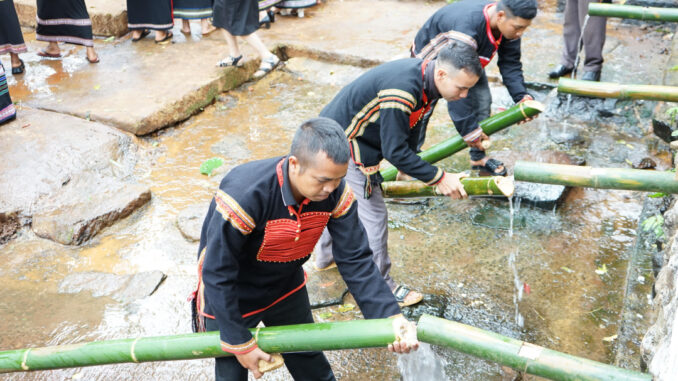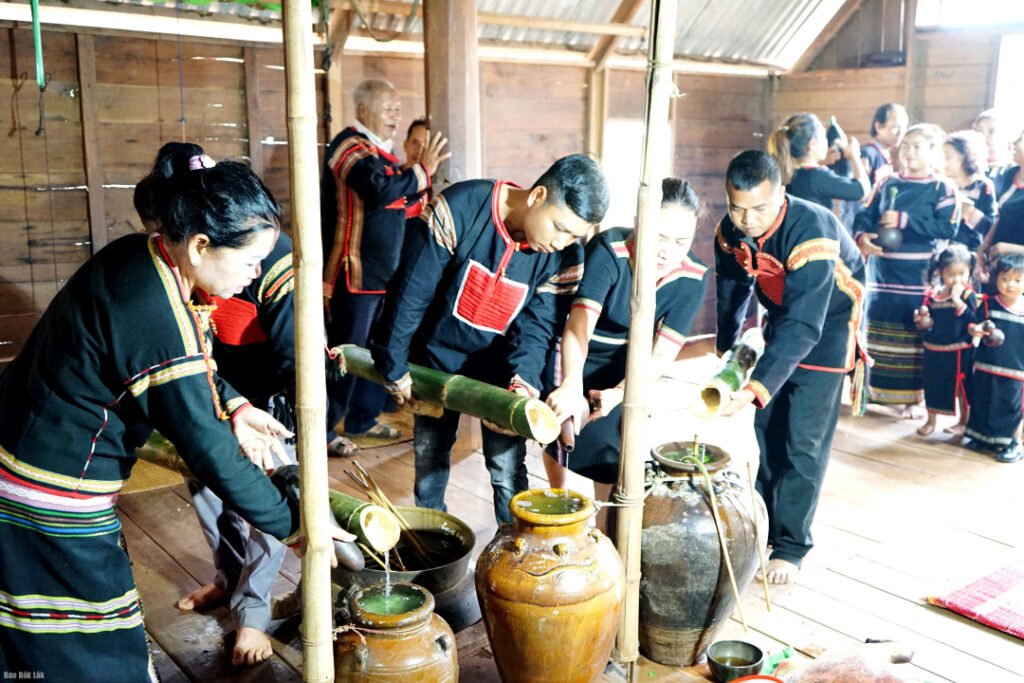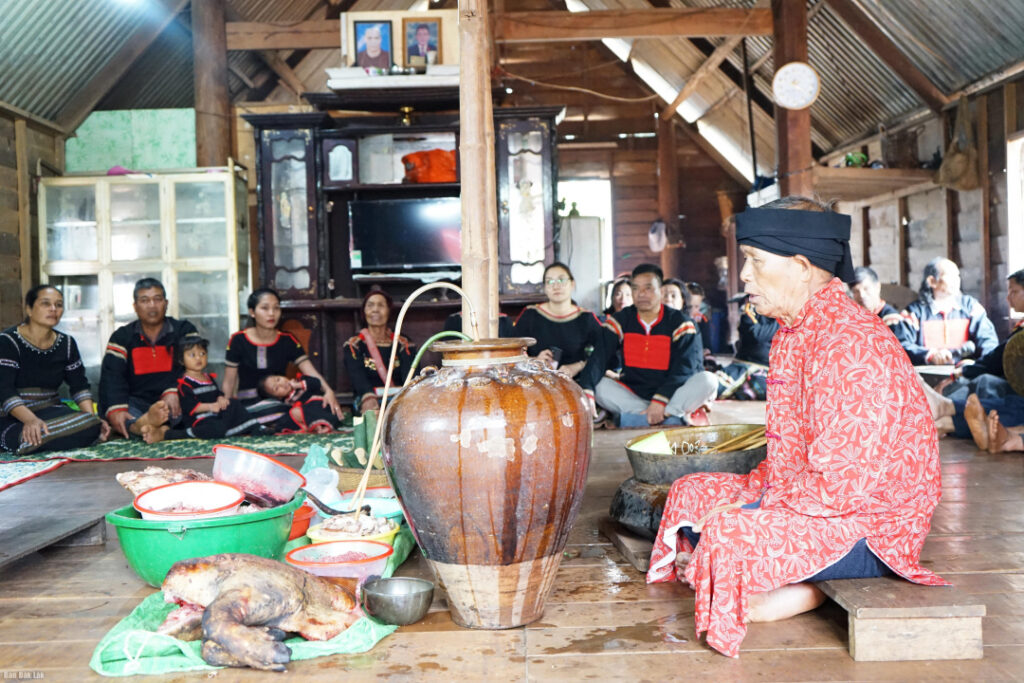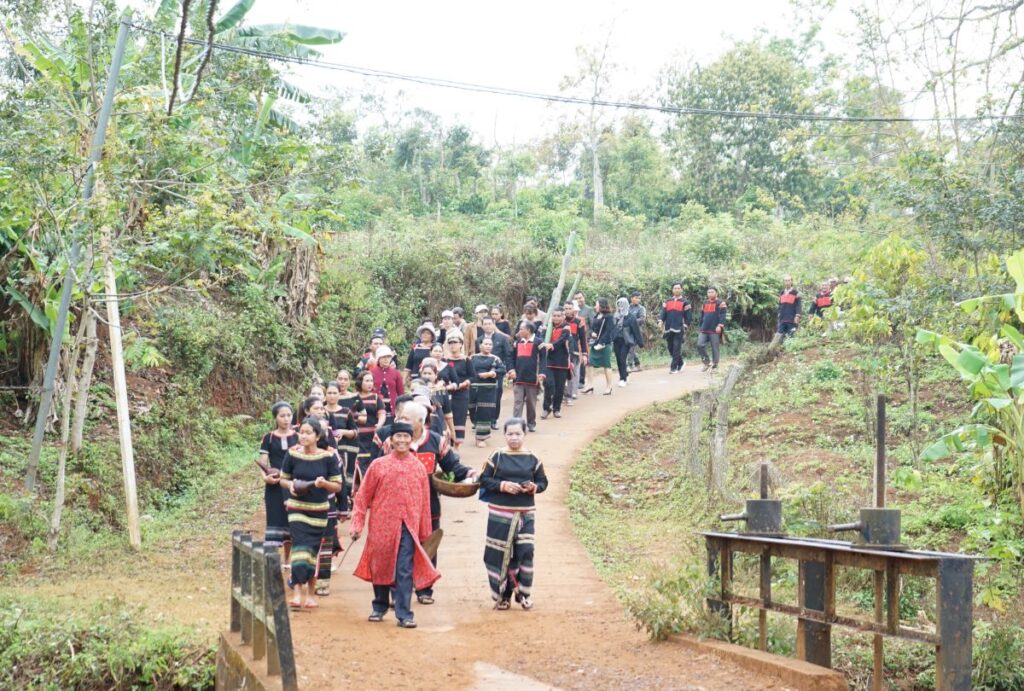
The water worship ceremony is a traditional ritual of some ethnic groups in the Central Highlands of Vietnam, especially the Ede people in Dak Lak. The ceremony is usually held at the beginning of the lunar new year, after harvesting the crop to thank the Water God for the results of the previous crop. The ceremony also aims to pray for favorable weather, peace, and prosperity for the village and the people.
Water worshiping
In Ede people’s mind, Water is the most essential and valuable thing, without water, people cannot live. Therefore, they worship the Water God like their Ancestor. According to this worship, Ede people are banned from some activities such as going to the fields, going to the forest, getting water from the wharf during the Water worship ceremony until the shaman finishes the ritual.
Rituals of Water worship ceremony
The water worshiping ceremony is usually organized by the village’s water wharf owner, but this is considered a common matter of the whole village and is directly assigned by the village elder, mobilizing all villagers to participate. Usually a few days before the worshiping ceremony, the village elder chooses a date to announce that everyone will focus on cleaning up the village and the area around the water wharf; young men in the village are assigned to go to the forest to collect bamboo and trees for build up Nêu tree, ceremonial pole, and water trough. On the day of the worshiping ceremony, from early morning everyone in the village is present at the house of the owner of the wharf, and according to the assignment of the village elder, everyone takes care of their work. Women take care of the kitchen work, the elders take care of cutting bamboo tubes to make Cần wine tubes, healthy men and boys build bamboo trees, slaughter pigs and goats, tie Cần wine to ceremonial poles,…
Depending on the economical condition of the wharf owner, village, and the custom of each ethnic people, the Water Worship ceremony can be held with the large or small scale. Even though the ceremony is held on a large or small scale, the offerings in Water Worship ceremony can include things such as: goats, chickens, pigs and Cần wine. In particular, the Water worship ceremony of Ede people in Dak Lak usually includes at least 8 jars of wine tied on Gưng pole in the middle of the Long house (nhà Dài). One of them is used for offering ancestors, one is for offering Water wharf; three are for offering the health of wharf owners; and three left are for regaling all villagers and guests.

After all offerings have been prepared, the shaman and wharf owner’s spouses will carefully check all things again together. After that, everyone in the gong team plays the song “Calling to Reunion” to inform the ancestors about the presence of many descendants in the village and invite the gods to attend the ceremony. The water wharf worshiping ceremony usually has 3 parts, the first part is worshiping at the water wharf, the next part is worshiping at the fence before bringing water into the house and the last part is worshiping at the water wharf owner’s house.

After each offering, the shaman pours pig’s blood into surrounding wine jars and into the water to invite the water god and gods in nearby places to enjoy the offerings. After the offering, the shaman and the ritual assistants take meat and wine to invite and eat with the gods, while the boys and girls in the village use gourd shells and bamboo tubes to get cool water from the wharf and take them home.

After finishing the worshiping ceremony at the water wharf, they return to the village to hold the ceremony at the fence of the water wharf. Here, the shaman asked Yàng (God) to guard the water wharf, chase away ghosts and demons, chase away hunger and poverty away, and bring food, wealth, good things to everyone, every home and to the village. Meanwhile, it is also to inform all people in the village that the water worship ceremony has ended, everyone is allowed to go to the wharf to get water or go to the forest or fields.
After completing the worshiping ritual at the fence, the shaman continues to enter the house to worship the health of the wharf owner and his family.
At this time, the gong team continues to play happy songs, both wharf owners and villagers immerse themselves in the festive atmosphere. They eat, drink, dance and sing passionately to the sound of gong music, in order to pray for Yàng’s witness and blessing for the never-ending stream of cool water, for a bountiful harvest, for an increasingly prosperous and fuller life.
Conclusion
The water worship ceremony is not only a cultural heritage of the Central Highlands people, but also a way of educating them to protect the environment and conserve water resources. The ceremony reflects the close relationship between humans and nature, and the spiritual values of the ethnic groups in the Central Highlands.
Vietnam warmly welcomes you to enjoy Vietnamese cuisine and culture and to make your trip go smoothly as the very first step, make your plan into reality by obtaining a Vietnam visa at https://www.vietnam-evisa.org.